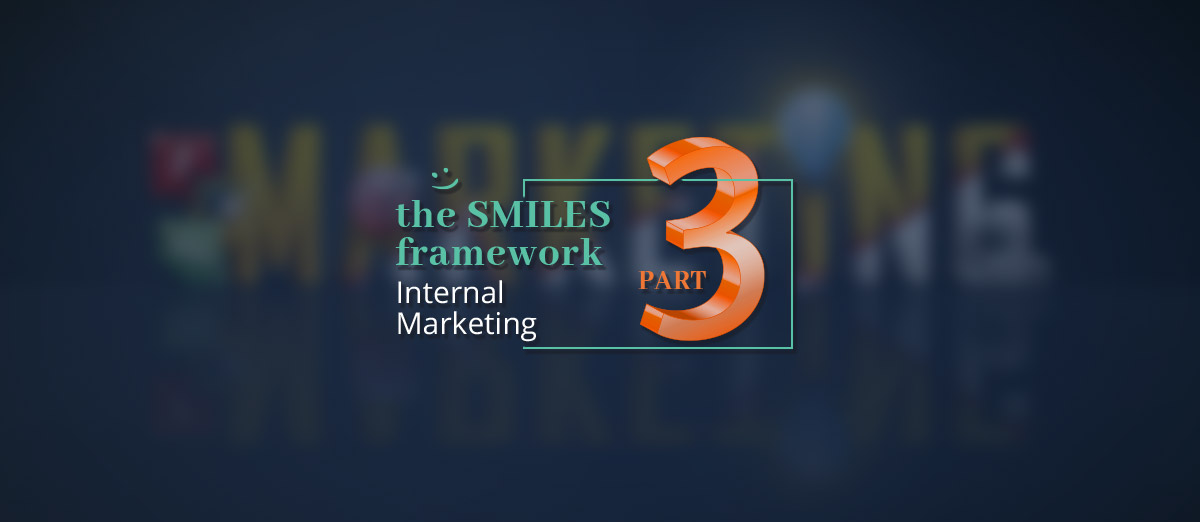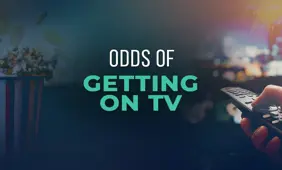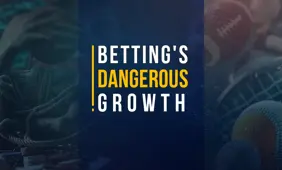Internal Marketing – The Key to Delivering Great Customer Experience in Casinos

Internal Marketing involves directing marketing-like activities toward employees and treating employees as though they are the firm’s customers. The goal of internal marketing is to enhance the employee experience, increase employee satisfaction, and augment employee engagement. Over three decades of research has shown that internal marketing has a huge positive impact on customer experience (CX). One seminal book, The Service Profit Chaini, linking employee satisfaction to customer loyalty and profitability, was immensely influential in shaping the discourse on internal marketing.
Introduction
We have all heard of companies making pronouncements to the effect that their people are their most important assets, that they truly care about their employees, or that they put people first. Yet, looking at the HR and management policies and practices of firms in most industries, including casinos, one must wonder whether all this people-talk is little more than lip service.
Only a few enlightened companies, particularly in the service sector, act with the knowledge that their competitive edge and distinctive competencies revolve around the people delivering the service and little else. These companies create a culture and embrace practices whereby employees are accorded every opportunity to be engaged in their job, empowered in their roles, and rewarded for their efforts. In effect, these companies engage in effective Internal Marketing.
Internal Marketing and CX
Internal Marketing has been defined in many ways. Some scholars in services marketing view it as part of the service culture, others view it as a strategy, and some as an effective marketing and HR practice. Let us look at two generally accepted definitions that illustrate the depth and scope of the concept.
Berry and Parasuraman (1992) define internal marketing as “attracting, developing, motivating, and retaining qualified employees through job products that satisfy their needs. Internal Marketing is the philosophy of treating employees as internal customers, and it is the strategy of shaping job products to fit human needs”ii.
Benoy Joseph, an American services marketing researcher, provides a more comprehensive definition when he writes that Internal Marketing is “the application of marketing, human resources management, and allied theories, techniques, and principles to motivate, mobilize, co-opt, and manage employees at all levels of the organization to continuously improve the way they serve external customers and each other. Effective internal marketing responds to employee needs as it advances the organization’s mission and goals”iii (Joseph1996).
Implicit in the discourse on Internal Marketing is the premise that the quality of customer service is ultimately determined by casino employees, in our case. Employees will deliver better quality service to customers if they: have an aptitude for service, receive proper training, find meaning in their work, are empowered to make service decisions on behalf of the casino, find the job experience fulfilling, and are appropriately rewarded for their efforts.
It would have been nice to look at examples of casino companies who offer great guest experiences through their employees; unfortunately, no examples come to mind. Instead, we will look at two illustrations from two very different industries—Zappos, the online shoe seller, and Southwest Airlines, the budget air carrier.
Tony Hsieh, the late founder of Zappos, once said, “Our goal at Zappos is for the Zappos brand to be about the very best customer service and customer experience. Zappos is powered by Service.” At Zappos, customer care starts with a deep-down, customer-focused culture. Zappos goes to great lengths to turn this culture into a customer reality. It all starts with the company’s customer service reps.
Most of Zappos.com sales are driven by word-of-mouth and by interactions with company employees. From the very beginning, Tony Hsieh ran Zappos with the realization that happy customers begin with happy, dedicated, and energetic employees. The company starts by bringing in the right people, providing them thorough training in the basics of customer service, and inspiring and empowering them to reach new heights in customer care.
Zappos places a lot of emphasis on hiring the right people. Several behavior observations are made to ensure that the potential recruit has an aptitude for service, displays humility, and fits into the Zappos culture. Once hired, if the recruits experience any dissonance, they are paid $4,000 to quit.
Hiring the right people begins with the tone and contents of the company’s recruitment website. The website explicitly states the kinds of people that Zappos seeks. Prospective employees have to buy into Zappos ten values beginning with, “Deliver WOW through service.” Another value is, “Create fun and a little weirdness,” which is elaborated further, “There’s no need to hide your random quirks or awkward dance moves from us. In a way, you might be taking a “break from life” by working here”!
To say that the employee-centric culture and HR practices at Zappos have benefitted the company would be an understatement. Zappos now serves more than 10 million customers annually. Today, Zappos is a wholly-owned subsidiary of Amazon (having been acquired for $1.2 billion in 2009), and its roughly 1,500 employees, headquartered in Las Vegas, produce over $2 billion in revenues annually.
Southwest Airlines is another example of a company reaping immense rewards from Internal Marketing. The company’s careers website states, “Employees will be provided the same concern, respect, and caring attitude within the organization that they are expected to share externally with every Southwest customer”iv.
Since 1994, the American Customer Satisfaction Index (ACSI) has been reporting customer satisfaction ratings of companies in various industries. For almost two decades, Southwest was the undisputed satisfaction leader among airlines. Then in 2012, JetBlue’s ACSI debut brought another high-scoring airline to the Index. “Nevertheless, Southwest has long been a strong satisfaction contender, and its customers feel that Southwest offers the best value by far in the industry”v.
How does the airline manage sustained leadership in customer satisfaction and maintain its profitability over 47 consecutive years? Colleen Barrett, Southwest’s President Emerita, said, “We are not an airline with great customer service. We are a great customer service organization that happens to be in the airline business.” Great customer service at Southwest results from the motivation and dedication of its fun-loving, slightly wacky employees.
The mantra at Southwest is, “Customers come second…and still get great service.” Like Zappos, Southwest hires people based more on aptitude than skills.
Lorraine Grubbs, the former Director of Employment at Southwest, explains, “She (Barrett) understood that customers always come first and that in order to have a customer service mindset, you cannot separate the importance of the Internal Customer (Employees) from the External Customers (Passengers). If the Internal Customer is happy, it will naturally flow to the External Customer in the form of good service. It was due to her diligence, persistence, and passion about Customer Service that she was able to create and keep the Customer Service mindset alive and well over the years”.
In emphasizing the importance of recruiting the right people, Grubbs writes, “You cannot “dictate” that people be funny. You cannot “measure” the fun. People either possess the Customer Service personality, or they don’t”vi.
Some of the employee engagement practices used at Southwest Airlines include promoting from within, insistence on communication and transparency, the immense effort devoted to keeping the company culture alive, heavy emphasis on customer service training, empowering employees to “do the right thing,” humility (“check your ego at the door”) and displaying light-heartedness and fun on the job (“Take the competition, not yourself seriously.”).
Internal Marketing and the Gambling Industry
Let’s face it; being a croupier or a casino floor supervisor isn’t the most exciting job in the world. Most new hires perceive their jobs as frustrating and monotonous. Many often feel bad about raking in people’s money, particularly from those who can least afford it. Justifiably so, the morale among frontline casino employees the world over has always been quite low. Hardly any frontline employees are looking to make a career in the industry. Most are just biding their time, waiting till they save enough money to go to school, or till they get married, or till they find another job that they will truly like.

Now put yourself in the shoes of a casino customer. Whether you are a high roller or an itinerant customer at a ten-dollar table, your interactions (or moments of truth) with the casino happen mostly with the dealers and floor supervisors. It is their professionalism, attitude, and mood that define the quality of your gambling experience.
The last thing you want as a punter is a dealer with a bad attitude, especially if you are losing. Your—i.e., the customer’s—perceptions of the casino and your satisfaction with the entertainment experience will be largely shaped by the quality of exchanges with the frontline staff. If the dealers and other floor personnel are unhappy, unmotivated, or unenthusiastic, they become the weakest link in the delivery of guest experience.
How do we ensure that customers have the quality of experience that they pay for? With increasing competition for the customer’s gaming dollar and having to contend with a saturated client base, the only way for a casino to survive and grow is to maintain its current customer base and to attract defecting customers from competitors. Most current practices used by casinos to accomplish these ends revolve around customer loyalty programs (designed around “earn and burn” premise), better database marketing, increased advertising, and investing millions of dollars in physical facilities. Not many casinos seriously consider differentiating themselves through Internal Marketing.
As seen with Zappos and Southwest Airlines, empowering frontline employees is a big part of Internal Marketing. Many casino executives feel that frontline empowerment is impossible in their context. Inability to empower is often attributed to legal stipulations, security protocol, and surveillance procedures. Despite the obvious constraints, an imaginative casino operator can devise ingenious approaches whereby the perceived benefits of frontline internal customer empowerment are maximized. Let’s take a look at the following list of scenarios:
- What if each frontline employee was authorized an annual budget to deal with customer grievances on the spot?
- What if the dealers themselves met on a weekly basis and designed next week’s roster?
- What if inputs from dealers and floor managers were actively solicited in formulating loyalty programs and advertising campaigns?
- What if each frontline employee was given an allowance for pursuing ongoing education or training in an area of his or her choice?
- What if 10% of the company’s advertising budget were diverted to training dealers and floor supervisors in the finer aspects of customer service?
- What if the company consciously decides to be among the top ten percentile of paymasters?
- What if a greater variety were introduced in the jobs of dealers, e.g., letting dealers work as customer service reps or at the bell desk during certain periods?
This list of “what ifs” may sound like heresy to some, while a small minority of executives would have already thought through some of these possibilities. Any “what if” scenario put in practice should:
- Improve the morale of frontline staff
- Manifest into better customer service and enhanced customer satisfaction
- Embody more pleasant working conditions and fewer employee grievances
- Encourage creativity in the workplace
- Make employees more productive and valuable.
Most importantly, any “what if” will improve your bottom line.
The next time you are thinking of investing in a new cascading fountain designed with feng shui in mind at the casino entrance or contemplating another car giveaway, pause for a moment of reflection. Ask yourself what matters most to the bulk of your customers: is it an edifice to stare at for a few seconds, is it a one-in-fifty-thousand chance to win a car, or is it sustained pleasant and enjoyable interactions with your frontline staff? Chances are, you will put the fountain on hold, you’ll have five car draws a year instead of six, and you’ll consider putting that money into employee training or incentives. Chances are, you’ll strengthen your Internal Marketing practices.
Conclusion
Internal marketing is especially important for employees who have direct contact with the customer. Regular casino customers won’t remember too many promotional gimmicks that various casinos have used over the years to gain their patronage. But they will remember every single incident where they have received bad or substandard service by a casino’s frontline staff.
The next time you, the manager, are looking at the gaming floor through your closed-circuit TV monitor, contemplating your next promotional gimmick, zero in on individual tables. Look at your Blackjack dealers, your Baccarat dealers, your Roulette dealers. Observe their facial expressions and their body language. Try to assess their mental state, their self-esteem, and the pride they take in their jobs.
Ask yourself what it would take to transform their bored expressions into welcoming demeanors. Ask yourself what it would take for each of your dealers to want to spend more time with individual customers at their table. Think of what you can do to change their jaded countenance into an inviting one. Do all this, and you will be well on your way to having a plan for practicing successful Internal Marketing.
In conclusion, I can do no better than remind casino executives of the admonishment of Albrecht and Zemke in their best seller, Service America! They write, “If you’re not serving the customer, you’d better be serving someone who is”vii. Dealers and floor personnel are the ones constantly serving the customer, and the job of a casino executive is to be of service to this frontline personnel.
i James L. Heskett, W. Earl Sasser, Leonard Schlesinger (1997). The Service Profit Chain: How Leading Companies Link Profit and Growth to Loyalty, Satisfaction, and Value. New York: The Free Press.
ii Leonard A. Berry and A. Parasuraman (1992), “Services Marketing Starts from Within”, Marketing Management, Winter, 25-34.
iii Joseph, Benoy (1996), “Internal Marketing Builds Service Quality”, Marketing Review, 16 (Spring), 54-59.
iv Culture Southwest (southwestair.com)
v American Customer Satisfaction Index Travel Report 2020-2021, www.theacsi.com.
vi “Lessons in Loyalty: How Southwest Airlines Does It—An Insider’s Point of View”, Parature White Paper (2010), www.parature.com.
vii Albrecht, Karl and Zemke, Ron. (1985), Service America! : doing business in the new economy. Homewood, Il: Dow Jones-Irwin.
Read more:
- The Role of Segmentation in Customer Experience
- Market Orientation and Value-Based Customer Experience in Casinos
- How to Provide Your Customers the Best Casino Experience – The SMILES Framework
- The Role of Linkage Analysis in Delivering Positive Customer Experience for Casino Players
- The Role of Emotional Competence in Delivering and Improving Casino Customer Experience
- The Role of Service Blueprinting in Creating High-Quality Customer Experiences in Casinos








Review this Blog
Leave a Comment
User Comments
comments for Internal Marketing – The Key to Delivering Great Customer Experience in Casinos